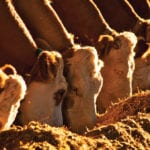
Tag Archives University of Manitoba

Canada’s Indigenous people fight for rights with new cash crop — cannabis
The stage is, however, being set for a struggle over whether or not it’s a ‘sovereign Indigenous right’

Crop establishment important for weed management
Combining many tools into an overall integrated weed management strategy is a winner

Finding a recipe for success on winter livestock rations
Producers may be going ‘off script’ this year as they get creative with feed sources to make up for poor forage yields, but what does that mean when it comes to a winter feed plan?
Hemp coffee creamer developed at U of M

Grain toll proposed for St. Lawrence Seaway
Our History: October 1958

Monsanto Canada’s Winnipeg office closing Sept. 1, 2019
Bayer, which purchased Monsanto in June, will keep its crop science headquarters in Calgary

Pollinator study looks for producer buy-in
A University of Manitoba researcher is looking for land to measure the impact of pollinator strips

Conditions ripe for fusarium, vomitoxin in wheat
Our History: September 1985

Crop residue burning down, but not out
Dry weather is one reason, but officials say there are other factors too

Manitoba Agriculture is losing its field crop pathologist
Commodity groups are hoping the position will be filled quickly


